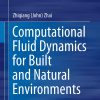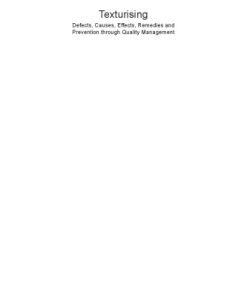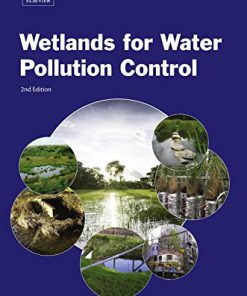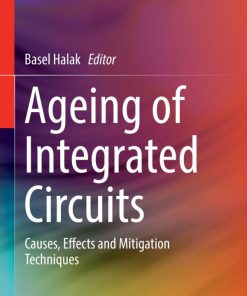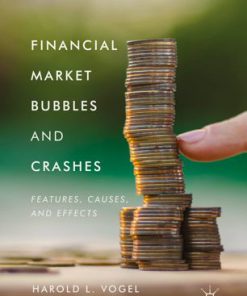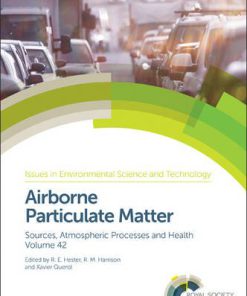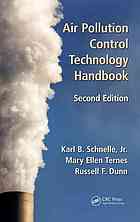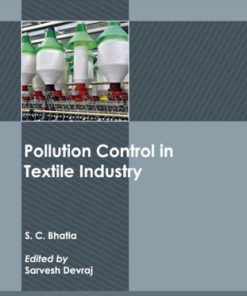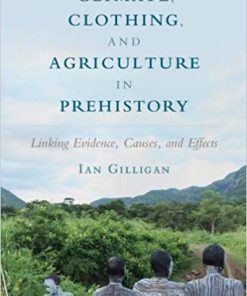Pollution Causes Effects and Control 5th Edition by Harrison ISBN 1849736480 9781849736480
$50.00 Original price was: $50.00.$25.00Current price is: $25.00.
Pollution Causes Effects and Control 5th Edition by R M Harrison – Ebook PDF Instant Download/Delivery: 1849736480, 978-1849736480
Full download Pollution Causes Effects and Control 5th Edition after payment
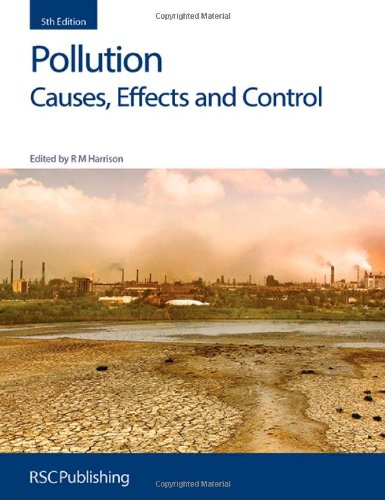
Product details:
ISBN 10: 1849736480
ISBN 13: 978-1849736480
Author: R M Harrison
Twenty years on from the first edition of Pollution and the topic remains high in the public awareness. Environmental pollution is now a major area of research, consultancy and technological development and is a priority for the political agendas of both the developed and developing worlds.
The fifth edition of this book is fully updated, and includes an entirely new chapter on Climate Change, presenting an authoritative view on this topic. Chapters in fast moving areas have been completely revised and several newcomers have joined the original set of authors.
This popular book has proved invaluable as a teaching resource for two decades and is frequently used as a reference by practitioners in the field. Readers of earlier editions will benefit from updates on technologies such as nanoscience, and the legislative changes that have occurred since the fourth edition in 2001.
Pollution Causes Effects and Control 5th Table of contents:
Chapter 1: Chemical Pollution of the Aquatic Environment by Priority Pollutants and its Control
1.1 Introduction
1.2 Pollution Control Philosophy
1.2.1 Integrated Control Measures
1.2.2 Trans-boundary Considerations
1.2.3 Complementary and Supplementary Control Measures
1.2.4 Life-cycle Considerations
1.2.5 The Impacts of Chemical Mixtures
1.3 Regulation of Direct Discharge Sources
1.3.1 The Water Framework Directive
1.3.2 REACH Regulations
1.4 Regulation of Diffuse Sources
1.5 Case Studies
1.5.1 Disinfection By-Products (DBPs)
1.5.2 Oestrogenic Chemicals
1.5.3 Pesticides
1.5.4 Emerging Contaminants of Concern (ECC)
1.6 Conclusions
References
Chapter 2: Chemistry and Pollution of the Marine Environment
2.1 Introduction
2.2 General Features of the Oceanic Environment
2.2.1 Sources of Chemicals to the Oceans
2.2.2 Circulation Patterns
2.2.3 Seawater Reactivity – Biogeochemical Processes
2.3 Sources, Movement and Behaviour of Individual Pollutants or Classes of Pollutant
2.3.1 Oil
2.3.2 Sewage and Nutrients
2.3.3 Persistent Organic Compounds
2.3.4 Trace Metals
2.3.5 Radioactivity
2.3.6 The Effects of Artificial Radioactivity on the Marine Environment
2.4 Conclusions
References
Chapter 3: Drinking Water Quality and Health
3.1 Introduction
3.2 Drinking Water Sources
3.3 Drinking Water Treatment and Supply
3.4 Sources of Contamination
3.5 Drinking Water Guidelines and Standards
3.6 Microbiological Contaminants
3.7 Chemical Contaminants
3.7.1 Inorganic Contaminants
3.7.2 Organic Contaminants
3.8 Water Safety Plans (WSPs)
3.9 Conclusions
References
Chapter 4: Water Pollution Biology
4.1 Introduction
4.1.1 The Role of Biology in Understanding Water Pollution
4.1.2 Pollution Types and Interactions
4.2 Organic Pollution
4.3 Eutrophication
4.3.1 Nutrient Pollution in Lakes
4.3.2 Nutrient Enrichment in Rivers and Groundwaters
4.3.3 Managing Nutrient Pollution
4.4 Acidification
4.4.1 Acidification from Above: Sulfur and Nitrogen Oxides
4.4.2 Recovery from Acidification
4.4.3 Acidification from Below: Acid Mine Drainage
4.5 Toxic Chemicals
4.5.1 Modes of Action of Toxic Chemicals
4.5.2 Bioaccumulation and Biomagnification
4.6 Thermal Pollution
4.6.1 Anthropogenic Impacts on Thermal Regime
4.6.2 Climate Change
4.7 Radioactivity
4.8 Oil
4.9 Emerging Contaminants
4.9.1 Nanomaterials
4.9.2 Human and Veterinary Medicines
4.10 Biological Monitoring of Pollution in Freshwaters
4.10.1 Laboratory Monitoring Techniques
4.10.2 Field Monitoring Techniques
4.11 Conclusions
References
Chapter 5: Sewage and Sewage Sludge Treatment
5.1 Introduction
5.1.1 Objectives of Sewage Treatment
5.1.2 The Importance of Wastewater Reuse
5.1.3 Criteria for Sewage Treatment
5.1.4 Composition of Sewage
5.2 Sewage Treatment Processes
5.2.1 Preliminary Treatment
5.2.2 Primary Sedimentation
5.2.3 Secondary (Biological) Treatment
5.2.4 Secondary Sedimentation
5.3 Sludge Treatment and Reuse
5.3.1 Sources of Municipal Sludge
5.3.2 Sludge Recycling Options
5.3.3 Pre-treatment Handling
5.3.4 Sludge Treatment Processes
References
Chapter 6: Treatment of Toxic Wastes
6.1 Introduction
6.1.1 Definition of Toxic and Hazardous Wastes
6.1.2 Sources
6.1.3 Case Study: Detection of Hazardous Materials used in the Preservation of Wood
6.2 Treatment and Management Routes
6.2.1 Introduction and Overview
6.2.2 Case Study: Animal Carcass Disposal following Disease Outbreak
6.2.3 Thermal Processes
6.2.4 Chemical Processes
6.3 Environmental and Health Management
6.3.1 Case Study: Severe Environmental Consequences of Poor Hazardous Waste Management (Spodden Valley, UK)
References
Chapter 7: Air Pollution: Sources, Concentrations, and Measurements
7.1 Introduction
7.2 Specific Air Pollutants
7.2.1 Sulfur Dioxide
7.2.2 Suspended Particulate Matter
7.2.3 Oxides of Nitrogen
7.2.4 Carbon Monoxide
7.2.5 Hydrocarbons
7.2.6 Secondary Pollutants: Ozone and Peroxyacetyl Nitrate
7.3 Temporal Patterns of Airborne Concentration
7.4 Air Quality Management
7.5 Indoor Air Quality
7.6 International Perspective
7.7 Appendix
7.7.1 Air Pollutant Concentration Units
References
Chapter 8: Chemistry of the Troposphere
8.1 Introduction
8.1.1 Pollutant Cycles
8.2 Atmospheric Chemical Transformations
8.2.1 The Importance of the Hydroxyl Radical (OH)
8.3 Atmospheric Oxidants
8.3.1 Formation of Ozone
8.3.2 Formation of PAN
8.3.3 NOy Compounds
8.4 Atmospheric Acids
8.4.1 Weak Acids
8.4.2 Strong Acids
8.4.3 Sulfuric Acid
8.4.4 Nitric Acid
8.4.5 Hydrochloric Acid
8.4.6 Methanesulfonic Acid (MSA)
8.5 Atmospheric Bases
8.6 Atmospheric Aerosols and Rainwater
8.6.1 Atmospheric Particles
8.6.2 Rainwater
8.6.3 Inter-relationships between Pollutants, Environmental Effects, and Impacts
References
Chapter 9: Chemistry and Pollution of the Stratosphere
9.1 Introduction
9.2 Stratospheric Ozone Chemistry
9.2.1 Gas-Phase Chemistry
9.2.2 Heterogeneous Chemistry
9.3 Natural Sources of Trace Gases
9.4 Anthropogenic Sources of Trace Gases
9.4.1 Direct Injection of Pollutants into the Stratosphere
9.5 Antarctic Ozone
9.6 Arctic Zone
9.7 Mid-Latitude Ozone
9.8 Legislation
9.9 Geoengineering
9.10 Conclusions
References
Chapter 10: Atmospheric Dispersal of Pollutants and the Modelling of Air Pollution
10.1 Introduction
10.2 Dispersion and Transport in the Atmosphere
10.2.1 Mechanical Turbulence
10.2.2 Turbulence and Atmospheric Stability
10.2.3 Boundary Layer and Mixing Heights
10.2.4 Building, Topographical, and Street Canyon Effects
10.2.5 Removal Processes – Dry and Wet Deposition
10.3 Modelling of Air Pollution Dispersion
10.3.1 Modelling in the Near-field
10.3.2 Operational Models
10.3.3 Emission Inventories
10.3.4 Modelling beyond Urban Scales – Long Range Transport and Chemical Transport Models
10.3.5 Modelling of Particulate Matter (PM)
10.4 Conclusion
CHAPTER 11: AIR POLLUTION AND HEALTH
11.1 Introduction
11.2 Exposure to Air Pollution
11.3 Epidemiological Methods Applied in the Air Pollution Field
11.3.1 Time Series Methods
11.3.2 Cohort Studies
11.3.3 Intervention Studies
11.4 Individual Air Pollutants
11.4.1 Particulate Matter
11.4.2 Problems with Mass as a Metric of Dose
11.4.3 Other Possible Metrics of “Dose”
11.4.4 World Health Organization Air Quality Guidelines for Particulate Matter
11.4.5 Nitrogen Dioxide
11.4.6 Sulfur Dioxide
11.4.7 Ozone
11.4.8 Carbon Monoxide
11.4.9 Carcinogenic Air Pollutants
11.5 Conclusion
References
CHAPTER 12: IMPACTS OF AIR POLLUTANTS ON CROPS, TREES, AND ECOSYSTEMS
12.1 Introduction
12.2 Methods of Investigation
12.3 Sulfur Dioxide and Sulfur Deposition
12.4 Nitrogen Oxides, Ammonia, and Nitrogen Deposition
12.5 Ozone
12.6 Interactions Between Pollutants
12.6.1 Sulfur Dioxide and Nitrogen Oxides
12.6.2 Interactions Between Ozone and Elevated CO2 Concentrations
12.7 Interactions with Biotic and Abiotic Factors
12.7.1 Climate
12.7.2 Interactions with Pests and Diseases
12.8 Critical Loads and Levels
12.9 Effects on Ecosystem Services
References
CHAPTER 13: CONTROL OF POLLUTANT EMISSIONS FROM ROAD TRANSPORT
13.1 Introduction
13.2 Engines
13.2.1 Introduction
13.2.2 Spark Ignition/Petrol Engines
13.2.3 Compression Ignition/Diesel Engines
13.3 Controlling Regulated Emissions
13.3.1 Introduction
13.3.2 Exhaust After-treatment
13.4 Reducing Carbon Dioxide Emissions
13.5 Fuel Quality
13.6 Alternative Fuels
13.6.1 Introduction
13.6.2 Natural Gas
13.6.3 Electric Vehicles
13.6.4 Hybrid Electric Vehicles
13.6.5 Biofuels
13.6.6 Hydrogen
13.7 Particle Emissions
13.8 Non-exhaust Particles
13.9 In-service Emissions
13.10 Conclusions
References
CHAPTER 14: CLIMATE CHANGE
14.1 Historical and Political Background
14.2 Scientific Background
14.3 Observed Changes in Climate
14.4 Changes in Atmospheric Composition and Radiative Forcing
14.5 Modelling Climate Change
14.6 Attribution of Climate Change over the Past 150 Years
14.7 Modelling Future Climate Change
14.8 Conclusions
References
CHAPTER 15: SOIL POLLUTION AND RISK ASSESSMENT
15.1 Introduction
15.2 Sources of Soil Pollutants
15.2.1 Potentially Toxic Elements
15.2.2 Organic Pollutants
15.2.3 Nanoparticles
15.3 Pathways of Pollutants in Soils
15.3.1 PTEs
15.3.2 Organic Pollutants
15.3.3 Nanoparticles
15.4 Consequences of Soil Pollution – Risk Assessment
15.4.1 Fine Tuning the Risk Assessment
15.5 Remediation of Contaminated Soils
15.6 Conclusions
References
CHAPTER 16: SOLID WASTE MANAGEMENT
16.1 Introduction
16.2 An Integrated Approach to Waste Management
16.2.1 The Waste Management Hierarchy
16.2.2 An Integrated Approach
16.3 Technical Options for Waste Prevention and Recycling
16.3.1 Opportunities for Waste Avoidance and Minimization
16.3.2 Collection and Sorting
16.4 Policy Options to Make Waste Prevention and Recycling Work in Practice
16.4.1 Introduction
16.4.2 Producer Responsibility
16.4.3 Eco-labelling
16.4.4 Charges and Economic Incentives
16.4.5 Persuasion Measures
16.4.6 Integrated Product Policy (IPP)
16.5 Bulk Waste Reduction Technologies and Final Disposal
16.5.1 Combustion/Incineration
16.5.2 Other Thermal Processes
16.5.3 Composting
16.5.4 Anaerobic Digestion
16.5.5 Mechanical Biological Treatment (MBT)
16.5.6 Landfilling
16.5.7 Environmental Considerations
16.6 Integrated Waste Management Strategies
16.6.1 Revisiting the Waste Management Hierarchy
16.6.2 Principles of Life Cycle Assessment (LCA)
16.6.3 Selecting the Best Environmental Option for Individual Materials
16.6.4 Waste Management and Climate Change
16.6.5 Waste Management Strategy for Northern Ireland
16.6.6 Recycling and Recovery of Plastics in Germany
References
CHAPTER 17: SYSTEM APPROACHES: LIFE CYCLE ASSESSMENT AND INDUSTRIAL ECOLOGY
17.1 Introduction: Changing Paradigms
17.2 Environmental System Analysis
17.2.1 Economy and Environment
17.2.2 Life Cycle Assessment
17.2.3 Material Flow Accounting
17.3 Applications and Aspirations
17.3.1 Industrial Ecology and the Circular Economy
17.3.2 Clean Technology and Pollution Prevention
17.3.3 Life Cycle Management
17.4 The Green Economy
References
CHAPTER 18: THE ENVIRONMENTAL BEHAVIOUR OF PERSISTENT ORGANIC POLLUTANTS
18.1 Introduction
18.1.1 Definition of Persistent Organic Pollutants (POPs)
18.1.2 Scope
18.1.3 Chemical Structure and Nomenclature
18.2 Adverse Effects
18.2.1 PCDD/Fs
18.2.2 PCBs
18.2.3 PBDEs
18.2.4 HBCDs
18.3 Measurement Techniques
18.3.1 Sampling Methodology
18.3.2 Analytical Methodology
18.4 Sources
18.4.1 PCDD/Fs
18.4.2 PCBs
18.4.3 PBDEs
18.4.4 HBCD
18.5 Important Physicochemical Properties and their Influence on Environmental Behaviour
18.5.1 Equilibrium Partitioning Coefficients
18.5.2 Aqueous Solubility
18.5.3 Environmental Persistence
18.5.4 Vapour Pressure
18.5.5 General Comments
18.6 Modelling Environmental Behaviour
18.6.1 The Fugacity Concept
18.6.2 Equilibrium Partitioning Modelling Approaches
18.6.3 Pharmacokinetic Models of Human Exposure
References
CHAPTER 19: RADIOACTIVITY IN THE ENVIRONMENT
19.1 Introduction
19.2 Radiation and Radioactivity
19.2.1 Types of Radiation
19.2.2 The Energy Changes of Nuclear Reactions
19.2.3 Rates of Radioactive Decay
19.2.4 Activity
19.2.5 Radioactive Decay Series
19.2.6 Production of Artificial Radionuclides
19.2.7 Nuclear Fission
19.2.8 Beta Decay of Fission Products
19.2.9 Units of Radiation Dose
19.3 Biological Effects of Radiation
19.3.1 General Effects
19.3.2 Biological Availability and Residence Times
19.3.3 Radiation Protection of Terrestrial Ecosystems
19.4 Natural Radioactivity
19.4.1 Cosmic Rays
19.4.2 Terrestrial Gamma Radiation
19.4.3 Radon and its Decay Products
19.4.4 Radioactivity in Food and Water
19.5 Medical Applications of Radioactivity
19.6 Pollution from Nuclear Weapons Explosions
19.7 Pollution from Electric Power Generation Plant and Other Nuclear Reactors
19.7.1 Emissions Resulting from Normal Reactor Operation
19.7.2 Pollution Following Reactor Accidents
19.7.3 Radioactive Waste Treatments and Disposal
19.7.4 Fuel Reprocessing
19.8 Pollution from Non-nuclear Processes
People also search for Pollution Causes Effects and Control 5th:
water pollution causes effects and control measures
thermal pollution causes effects and control measures
marine pollution causes effects and control measures
pollution causes and effects on environment
water pollution causes and effects brainly
Tags:
Harrison,Pollution,Causes Effects,Control 5th
You may also like…
Engineering - Environmental
Engineering
Wetlands for Water Pollution Control 2nd Edition by Miklas Scholz 0444636072 9780444636072
Business & Economics - Markets
Financial Market Bubbles and Crashes, Second Edition: Features, Causes, and Effects Harold L. Vogel
Engineering Biology and other natural sciences - Ecology
Air pollution control technology handbook Second Edition Dunn
Politics & Philosophy - Anthropology
Climate Clothing and Agriculture in Prehistory Linking Evidence Causes and Effects Ian Gilligan



